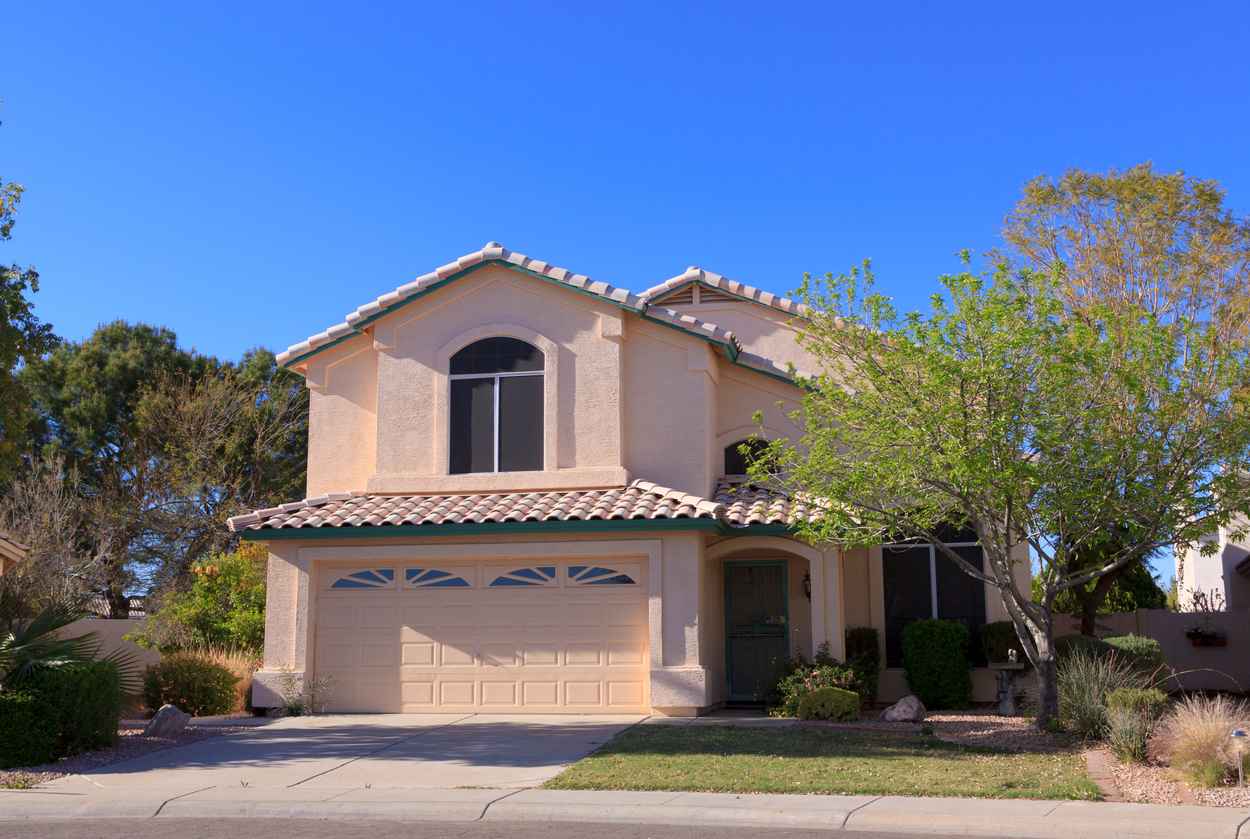Strategically placed trees add to the aesthetic appeal of your property. However, if planted too close to a structure, they can be a problem. Tree branches overhanging a roof can cause damage in a variety of ways:
- Leaves and twigs can accumulate on a flat roof and block up scuppers and/or drains.
- Falling branches can break roof tile, gouge holes in roll roofing or foam roofs, and dent metal roofs.
- Shaded areas of shingle roofs may develop staining and/or moss growths.
Shade
Especially in the summer heat, the shade trees provide is greatly appreciated. However, if the shade area is too dense, it can create problems for the roof area below. Moisture will tend to linger in areas that are shaded, resulting in roofing materials being damaged. Moss on shingles, degraded roof coatings, deteriorating tile/metal underlayments — these all contribute to decreased roof life.
Access
Branches brushing a roof and/or overhanging a roof provide a means for animals (including rodents and snakes) to access roof areas. Once on the roof, smaller animals and snakes may be able to enter the attic space via roof penetrations (chimneys, vent fan openings, attic vents, etc.). No one wants to hear the pitter-patter of rats running in the attic.
Debris
Leaves and branches falling on a roof can cause damage, as well as block drainage. This increases the chance of leaks and other damage. Tree debris also provides food and shelter for insects and rodents. If left on the roof for a long enough time, decaying tree debris becomes the matter in which other plants can take root.
If sufficiently large branches break and fall on a roof, they may cause structural damage and even break through a roof. This may result in interior damage and necessitate costly repairs.
Gutters
Your gutters are an important part of your roof’s system to effectively funnel and drain away excess water. However, when trees are too close to the gutters, branches and leaves can clog the gutters. Clogged gutters might mean leaks from the roof and gutter system, pooling water on the roof or at your home’s base, and eventual damage to your home’s foundation. Runoff from clogged gutters can also stain the inside and outside of your home.
Additionally, clogged gutters might damage the actual gutters, lead to mold, ruin landscaping, create risks for slipping and falling, and even shorten your roof’s lifespan. All these issues might not only require a complete roof replacement but can also ruin yards or even cause structural damage to the entire home. They can even potentially risk your health, especially if pests and mold are allowed to thrive.
The best way to prevent these issues is to clean out the gutters regularly — especially after large rainstorms or windy days — and maintain the gutters to ensure they last a long time. Additionally, you might consider a gutter barrier system that ensures that leaves and branches can’t fall into the gutters in the first place.
Protect Your Property
Keep tree branches cut back sufficiently that even if close to the roof, they are thin enough and high enough that they don’t provide too much shade, don’t risk hitting the roof when blown by wind, and don’t provide a means for animals to access the roof.
Thinning out interior branches of trees keeps leaf debris accumulations down and minimizes the need to clean roof surfaces.
Taking these simple precautions will help protect and extend the life of your roof, even while enabling you to enjoy the beauty and benefits of having trees around your building. For additional information on roof care and maintenance, contact us at SUNVEK today.


